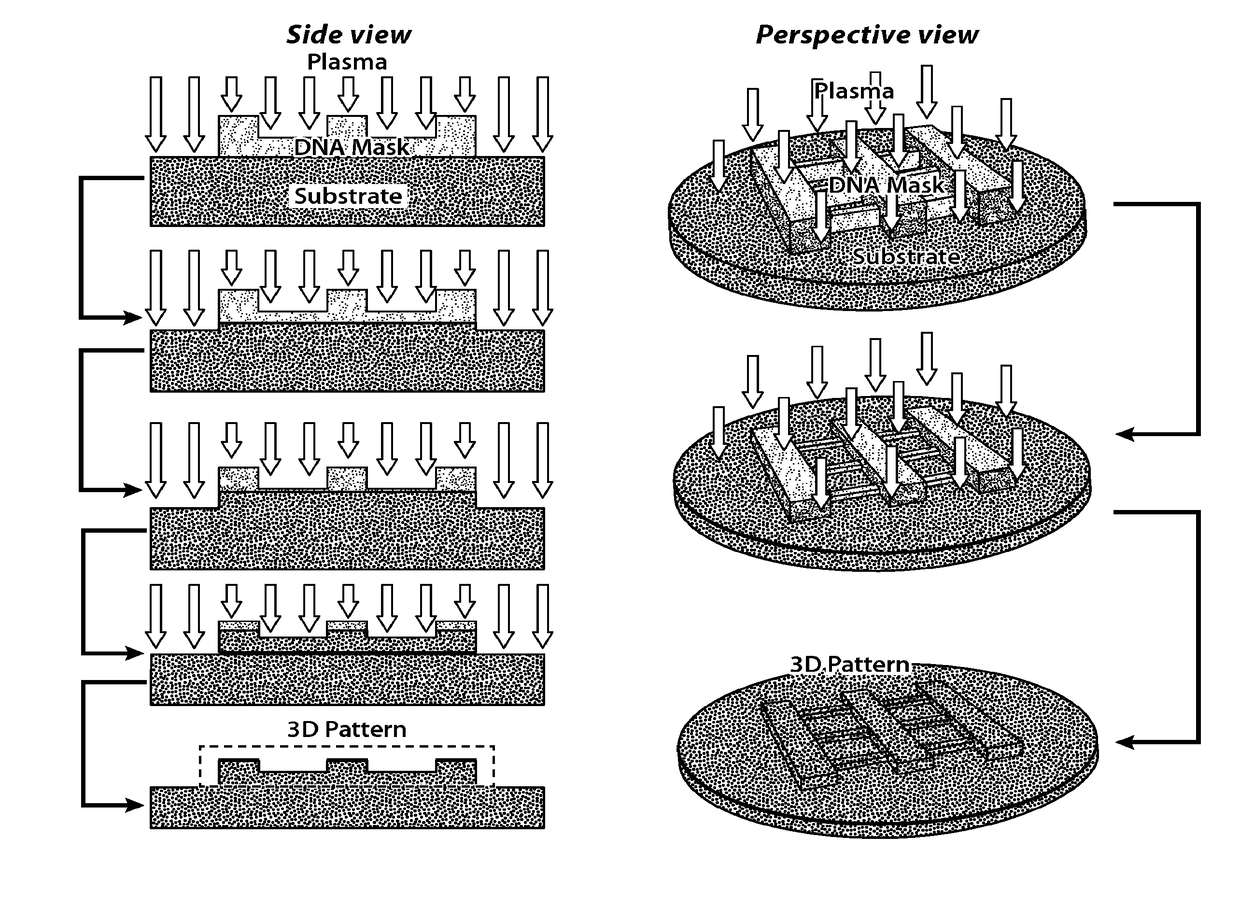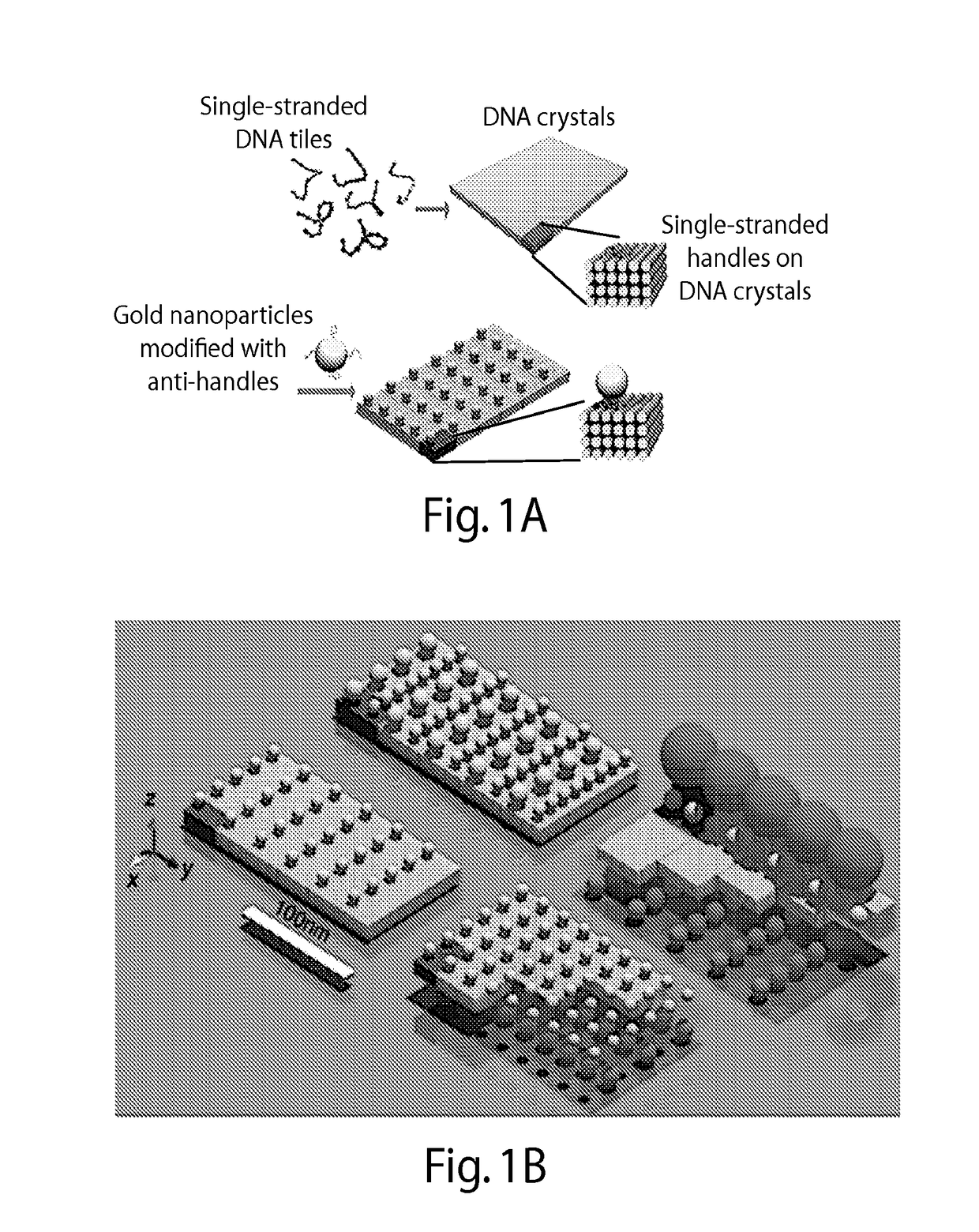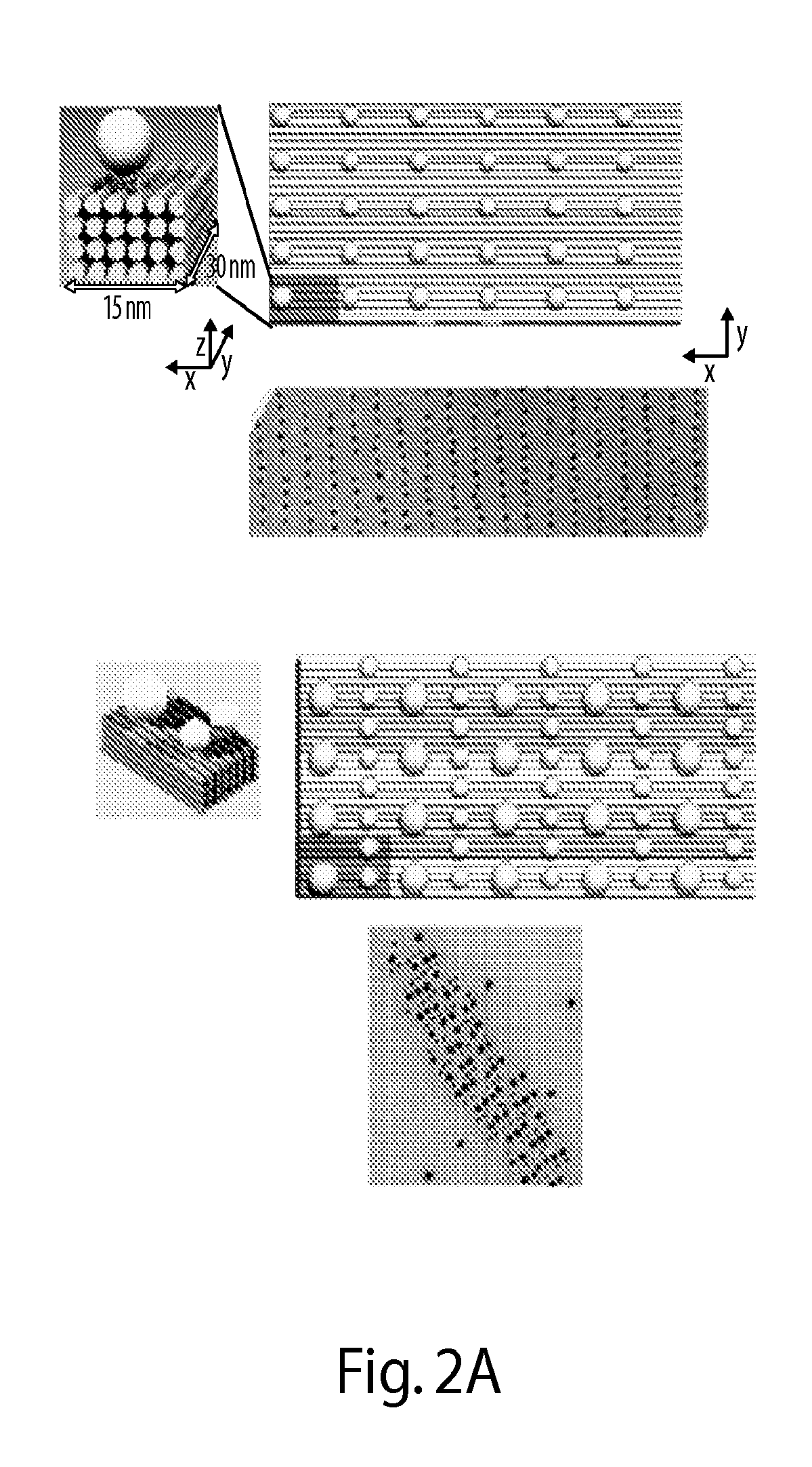Scalable nucleic acid-based nanofabrication
a nucleic acid-based nanofabrication and nucleic acid technology, applied in the direction of nanostructure manufacturing, nanostructure assembly, material nanotechnology, etc., can solve the problem of limited dna chemical stability
- Summary
- Abstract
- Description
- Claims
- Application Information
AI Technical Summary
Benefits of technology
Problems solved by technology
Method used
Image
Examples
examples 1
[0305]FIG. 1A illustrates one embodiment of the present disclosure whereby gold nanoparticles chains are aligned in parallel on DNA crystals along the y direction (FIG. 1A). A basic DNA unit cell is designed with x-z cross section of 8 helices by 4 helices and a y-dimensional length of 96 base pairs. This provides a designed x-y periodicity of 15 nm×30 nm, assuming a 2.5 nm helix width and a 0.32 nm per base pair. The repetitive DNA unit cell grows along the x- and y-direction to form the domain composed of four homogeneous sequenced 12-nt single-stranded DNA (ssDNA) handles to capture one gold nanoparticle. Multiple 12-nt anti-handles (a ssDNA with sequence complementary to the handle) are also immobilized onto the gold nanoparticle surface. The hybridization between the handles and the anti-handles anchor the gold nanoparticles onto the prescribed position of DNA crystal. Each gold nanoparticle deviating from the designed position cannot bind to all four handles within a unit cell...
examples 2
[0309]This Example describes the use of rod-shaped DNA nanostructures (10 nm in width and 2 μm in length) as masks to direct the reactive ion (plasma) etching of inorganic substrates into prescribed linear patterns.
DNA Self-Assembly to Form DNA Rod with 4×4 Helices
[0310]Single-stranded tile (SST) DNA strands were mixed in polymerase chain reaction (PCR) tubes to produce a solution having a final concentration of 1 μM for each strand of DNA. 9 μl of the solution (e.g., comprising or consisting of water) of DNA strands and 1 μl of the folding buffer were combined (final concentration: 0.9 μM SST strands, 5 mM Tris·Cl, pH=7.9 1 mM EDTA, and 40 mM MgCl2). The combined solution was shaken gently to homogenize the solution. The DNA in the solution was annealed in a thermal cycler with a staged isothermal folding for 24 hours using the following the program: 80° C. for 15 minutes, 44° C. for 12 hours, and 39° C. for an additional 12 hours. The resulting DNA nanostructures were rod-shaped (...
examples 3
Deposition of DNA Nanostructure to a Substrate Followed by Desalting and Drying:
[0314]The following example is non-limiting and it is to be understood that a range of nucleic acid nanostructures and substrates and conditions, such as described herein, can be used to effect a similarly desirable result.
[0315]A solution (e.g., 0.5×Tris-ethylenediaminetetraacetic acid (TE) buffer, 40 mM Mg2+; or 100 mM-1 M NaNO3) comprising a bare three-dimensional DNA nanostructure (e.g., 10 pM-1 μM nanostructure concentration, at least 32 base pairs in length) with a depth of 2 nm is adsorbed onto a substrate (e.g., 1 μl -100 μl solution per cm2 substrate), and the solution is permitted to incubate on the substrate (e.g., for 3 minutes to 4 hours) at 4˜25° C. with 50-100% humidity for deposition of DNA nanostructure. Following deposition, the solution is removed (e.g., by wiping and / or by forced air flow) for the subsequent desalting process. The desalting process is applied to remove residual inorga...
PUM
 Login to View More
Login to View More Abstract
Description
Claims
Application Information
 Login to View More
Login to View More - R&D
- Intellectual Property
- Life Sciences
- Materials
- Tech Scout
- Unparalleled Data Quality
- Higher Quality Content
- 60% Fewer Hallucinations
Browse by: Latest US Patents, China's latest patents, Technical Efficacy Thesaurus, Application Domain, Technology Topic, Popular Technical Reports.
© 2025 PatSnap. All rights reserved.Legal|Privacy policy|Modern Slavery Act Transparency Statement|Sitemap|About US| Contact US: help@patsnap.com



